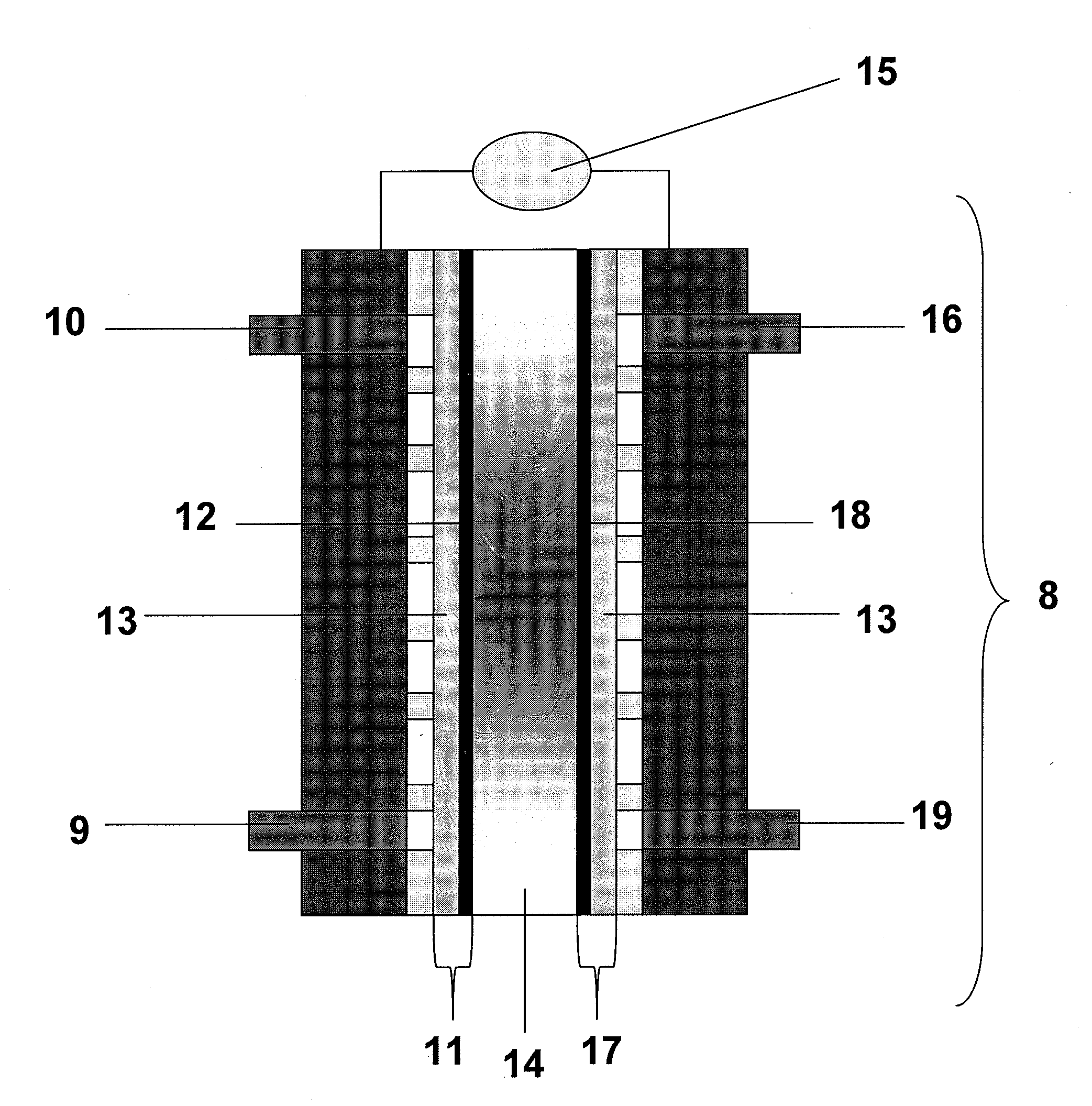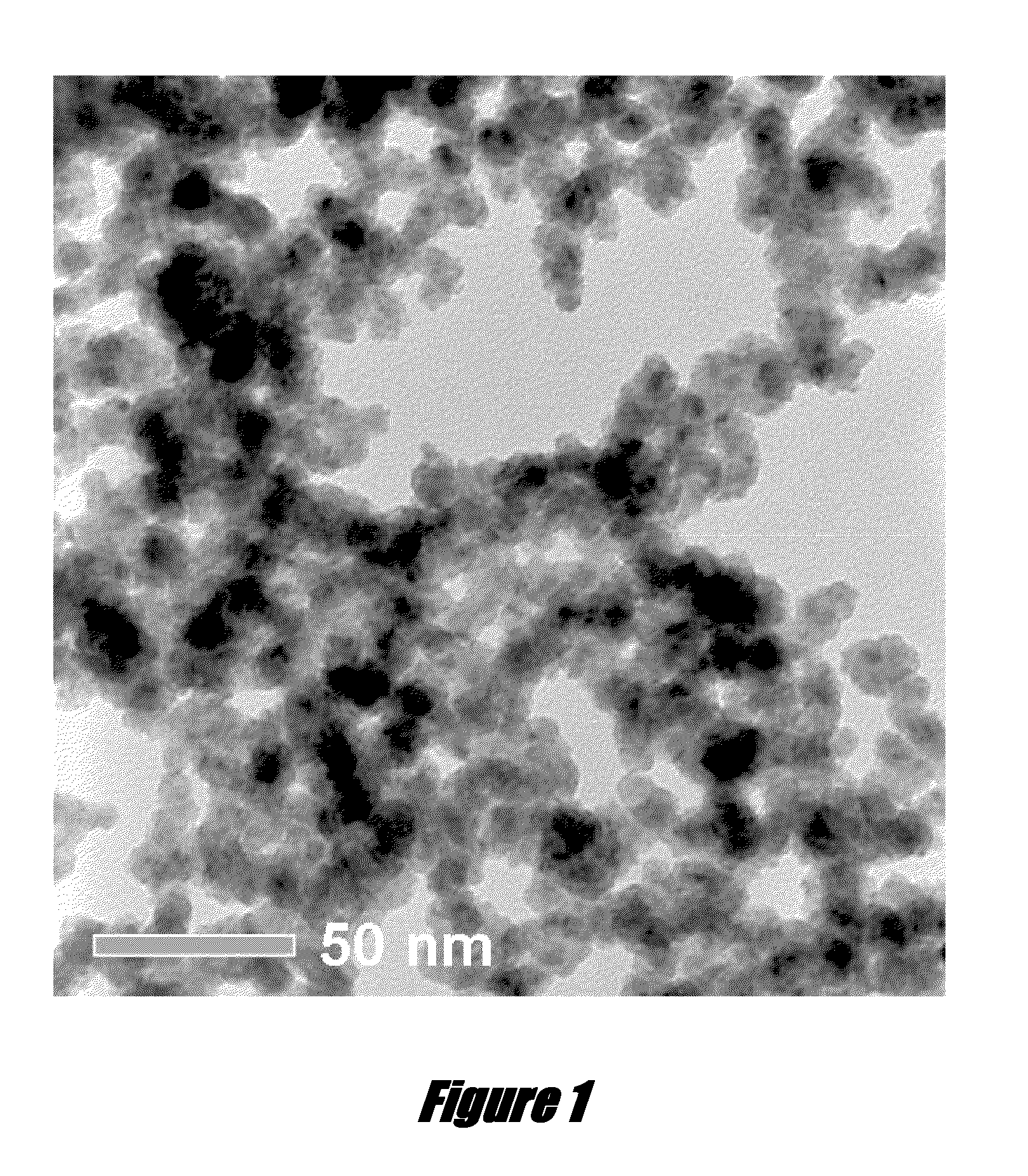Compositions of nanometal particles containing a metal or alloy and platinum particles for use in fuel cells
a technology of nanometal particles and platinum particles, which is applied in the direction of fuel cell details, metal/metal-oxide/metal-hydroxide catalysts, etc., can solve the problems of limiting the commercialization of noble metals, affecting the commercialization prospects, and consuming large amounts of noble metals
- Summary
- Abstract
- Description
- Claims
- Application Information
AI Technical Summary
Problems solved by technology
Method used
Image
Examples
Embodiment Construction
[0018]The inclusion of nanoparticles of metal, alloy and / or either having an oxide shell in the ink composition serves to improve the efficiency of oxidation and reduction reactions by increasing the reaction surface area as well as enhancing electrocatalysis. The observed electrocatalysis enhancement can be explained by molecular orbital theory. Since the nanoparticles are in good contact with platinum, they accept electrons from platinum. In turn, platinum becomes electron deficient, and will react faster with the oxidant and reductant, thereby increasing the efficiency of the reaction.
[0019]Due to increased surface area, when nanoparticles are blended with platinum, water, and an ionically conducting polymer to form an ink, the activity of platinum is increased due to enhanced contact of the platinum and the nanoparticles. This contact serves two main functions, a) to enhance the electronic interaction of platinum with the oxidant or reductant by virtue of increasing the d-orbita...
PUM
| Property | Measurement | Unit |
|---|---|---|
| diameter | aaaaa | aaaaa |
| diameter | aaaaa | aaaaa |
| temperature | aaaaa | aaaaa |
Abstract
Description
Claims
Application Information
 Login to View More
Login to View More - R&D
- Intellectual Property
- Life Sciences
- Materials
- Tech Scout
- Unparalleled Data Quality
- Higher Quality Content
- 60% Fewer Hallucinations
Browse by: Latest US Patents, China's latest patents, Technical Efficacy Thesaurus, Application Domain, Technology Topic, Popular Technical Reports.
© 2025 PatSnap. All rights reserved.Legal|Privacy policy|Modern Slavery Act Transparency Statement|Sitemap|About US| Contact US: help@patsnap.com



